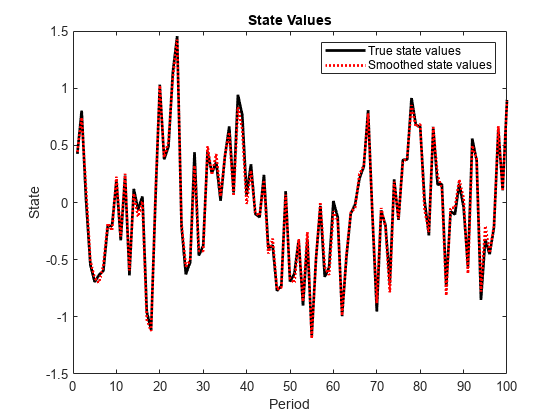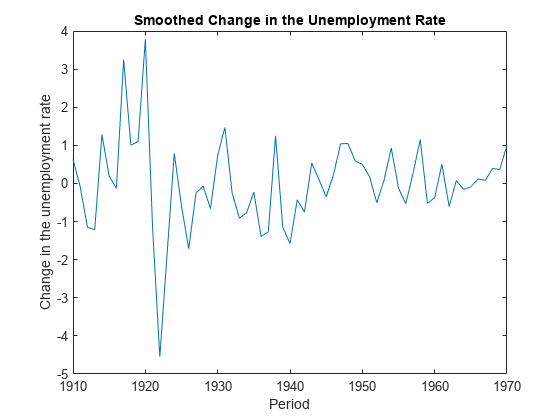smooth
Backward recursion of state-space models
Description
X = smooth(Mdl,Y)X)
by performing backward recursion of the fully-specified state-space model Mdl.
That is, smooth applies the standard Kalman filter using Mdl and
the observed responses Y.
X = smooth(Mdl,Y,Name,Value)Name,Value pair
arguments.
If Mdl is not fully specified, then you must
set the unknown parameters to known scalars using the Params Name,Value pair
argument.
[ uses any of the input arguments
in the previous syntaxes to additionally return the loglikelihood
value (X,logL,Output]
= smooth(___)logL) and an output structure array (Output)
containing:
Smoothed states and their estimated covariance matrix
Smoothed state disturbances and their estimated covariance matrix
Smoothed observation innovations and their estimated covariance matrix
The loglikelihood value
The adjusted Kalman gain
And a vector indicating which data the software used to filter
Examples
Input Arguments
Name-Value Arguments
Output Arguments
Tips
Mdldoes not store the response data, predictor data, and the regression coefficients. Supply the data wherever necessary using the appropriate input or name-value arguments.To accelerate estimation for low-dimensional, time-invariant models, set
'Univariate',true. Using this specification, the software sequentially updates rather then updating all at once during the filtering process.
Algorithms
The Kalman filter accommodates missing data by not updating filtered state estimates corresponding to missing observations. In other words, suppose there is a missing observation at period t. Then, the state forecast for period t based on the previous t – 1 observations and filtered state for period t are equivalent.
For explicitly defined state-space models,
smoothapplies all predictors to each response series. However, each response series has its own set of regression coefficients.
References
[1] Durbin J., and S. J. Koopman. Time Series Analysis by State Space Methods. 2nd ed. Oxford: Oxford University Press, 2012.
Version History
Introduced in R2014a

